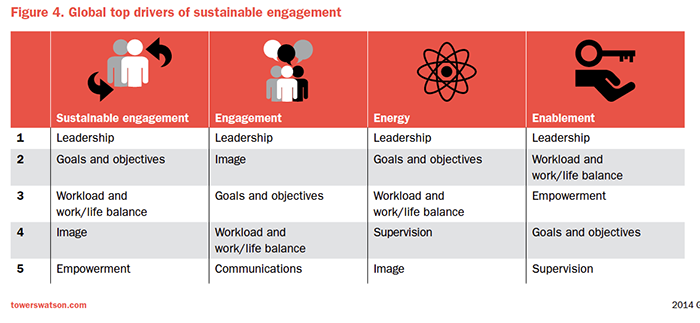
Your next employer is looking for employee engagement. If you can demonstrate employee engagement, your chances of getting the job you want improve significantly.
If you’re not in the HR field, you may have never heard the phrase “employee engagement.” Employee engagement plays a significant role in the definition of professionalism in the workplace. It is also a big deal for HR professionals, because roughly half of the employees they deal with from day to day aren’t engaged in what they’re doing.
Basically, employee engagement measures the emotional commitment that an employee has to his or her organization and to the organization’s goals. There has been massive volumes of research conducted on the topic since the 1960’s. It all shows that engaged employees are more committed, more productive, have fewer absences and accidents, and are more attuned to customers.
All good things, but the statistics on employee engagement are pretty miserable. According to Gallup, 51% of the US workforce is not completely engaged with their work. The same percentage is looking to leave their current job (though some of them may be engaged employees who are exasperated with the rest of the team). Disengaged employees cost organizations between $450 and $550 billion annually and the cost to replace an employee who leaves can be 33% of his annual salary.1
It all boils down to this. Engaged employees contribute and make money for the company. Disengaged employees don’t and they’re expensive.

What makes an Engaged Employee?
It’s no surprise that most of the research on the subject is designed to help companies implement programs that will improve employee engagement. For several years, risk management and insurance company Willis Towers Watson has conducted an ongoing Global Workforce Study.2 Their research indicates several key drivers for employee engagement within an organization:
- Quality of and trust in company leadership
- Establishment of clear goals and objectives for each employee
- Work/life balance
- Relationship with direct supervisors
- Clear Communications

Here’s the thing. Despite the research and the best efforts of well-meaning HR professionals and their consultants, efforts to improve employee engagement aren’t really getting anywhere. Regardless of the study you choose to read, the 50% disengaged statistic hasn’t improved much over the years.
That fact provokes a few questions: If company efforts to engage employees aren’t really working, then where do the engaged employees come from? Could commitment and the propensity for engagement with your work and your employer be an intrinsic characteristic? Are some folks just naturally more likely to be committed to their work?
The answer to those questions is self-evident and people who make hiring decisions know it. Some people are self-motivated and they’re much more likely to be engaged in what they’re doing. If you can demonstrate that you will be an engaged employee, the decision makers will want to hire you.
Illustrating Employee Engagement during the Job Search
What are the characteristics that you need to highlight in your job application? They’re the good attributes of an engaged employee – commitment, the ability to generate ideas, lead, and contribute to the company’s success. That’s no great revelation, but there’s another more interesting way to demonstrate employee engagement in a job application – by directly addressing the drivers of engagement that are listed above. The objective is to show that you’re self-motivated, with a natural inclination to engage with what you’re doing and those around you, even if some of the organizational incentives are lacking.
Here are some examples of an engaged employee:
- Demonstrate proactive engagement. Include narratives that illustrate how you took charge of an initiative, faced a challenge, and produced results.
- Show that you’re career-minded. Even if the company doesn’t have a set career progression for each employee, express your goals and how they fit your commitment to the company’s success.
- Illustrate how you work with supervisors, peers, and subordinates. You can perform at top levels, even if the organizational structure is a little fuzzy.
- Communicate clearly – especially if you’ll be in a managerial role. Weak communications is a problem in many organizations. They may need someone just like you.
Creating An Engaging Resume
Your resume is an important component in your job search. Yes, it should be engaging and it should demonstrate your engagement. Your job application should convince your next employer that you’ll be a contributor, that you’ll be self-motivated and focused on the goals of the company. If you can demonstrate the characteristics of an engaged employee in your resume, you’ll improve your prospects for interviews and job offers.
Could you use some help? Maybe you are an engaged employee, but you have a hard time putting your accomplishments, creativity, and commitment into your job application. CareerPro Global has been working with job seekers like you for over 36 years to create resumes that present a clear and compelling illustration of their capabilities and accomplishments.
When you choose CareerPro Global, you’ll gain a partner who will work with you to create resumes for management positions that will land on top of the stack, resulting in interviews and job offers. Ready for your next career move? We hope you’ll get in touch for a free consultation.
Get Started With a Free Consultation
Sources:
12017 Employee Engagement and Loyalty Statistics, Access Perks, 8/28/17.
22014 Global Workforce Study, Willis Towers Watson, 8/14



